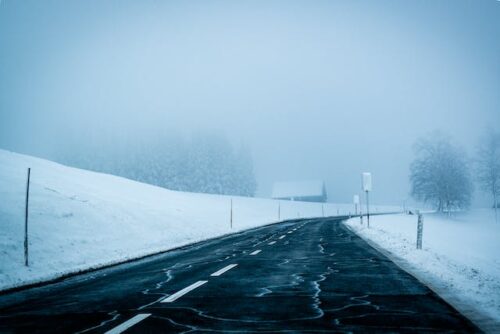
Pennsylvania winters are nothing to joke about. Temperatures will range between 19°F and 33°F, which brings with it approximately 38 inches of snow per year. In the course of your day-to-day, you may end up having to drive in rain, sleet, and snow over the course of a single winter. This blog will review some of the most dangerous driving hazards you may encounter during winter in Pennsylvania. Keeping these in mind will help you stay alert and ready to handle sudden road dangers. If you’ve recently dealt with a road incident, don’t hesitate to reach out to a York County auto accident attorney. You’ve already been through enough stress. Let us help you get the compensation you deserve.
Winter Driving Hazards: Visibility Problems Affect Everything
Weather conditions like rain and fog—and in winter, snow, sleet, and hail—obscure your visibility. You can’t respond to a threat that you can’t perceive. The best protection would really be staying off the roads, but as that’s not always an option, there are still things you can do to protect yourself and others while driving in low visibility situations.
Stay Safe in Low Visibility By:
- Driving slowly. If you can’t see far, give yourself more time to react by reducing your speed.
- Avoid using your high beams and instead use your low beams. High beams can cause a glare that only worsens visibility issues.
- If visibility continues to deteriorate, pull over and turn on your hazard lights. Turn off your other light and keep your foot on the brake, to avoid nearby vehicles confusing you for a moving car.
Wet Roads: Typical Dangers Worth Preparing For
Winter weather increases the possibility of roads getting wet, which regardless of the season, will make traction harder and accidents easier. Hydroplaning happens as your tires lose traction, especially when driving through puddles or other bodies of water using tires that have low tread.
How To Drive in Wet Conditions
Driving slowly is an important precaution for many hazards.
If your car starts to hydroplane, move your foot off the accelerator but do not brake abruptly. If you need to brake, be careful to do so slowly. Steer in the direction that your car is skidding.
Black Ice: Invisible and Deadly Threat
Black ice is an extraordinarily dangerous road condition. It is a transparent sheet of ice that can form on surfaces like roads and driveways after light freezing rain or after snow, ice, or rain melts and then freezes again. Black ice most frequently forms late at night or early in the morning on surfaces that tend to get little traffic and sunlight. Due to how cold air affects temperatures above and underneath them, bridges and overpasses are also common places for black ice to accumulate.
To protect yourself from black ice, be sure to:
- Look out for cars suddenly swerving
- Check for notably glossy or shiny patches on the road, especially when the rest of the road is otherwise dull.
- Stay calm if you realize you’ve hit black ice. Driving over black ice is similar to driving when your car is hydroplaning. This is why it’s important to drive slowly. If you notice your car swerving, gently turn the car in the same direction. Black ice usually isn’t more than 20 feet, so you should be able to ride it out soon.

